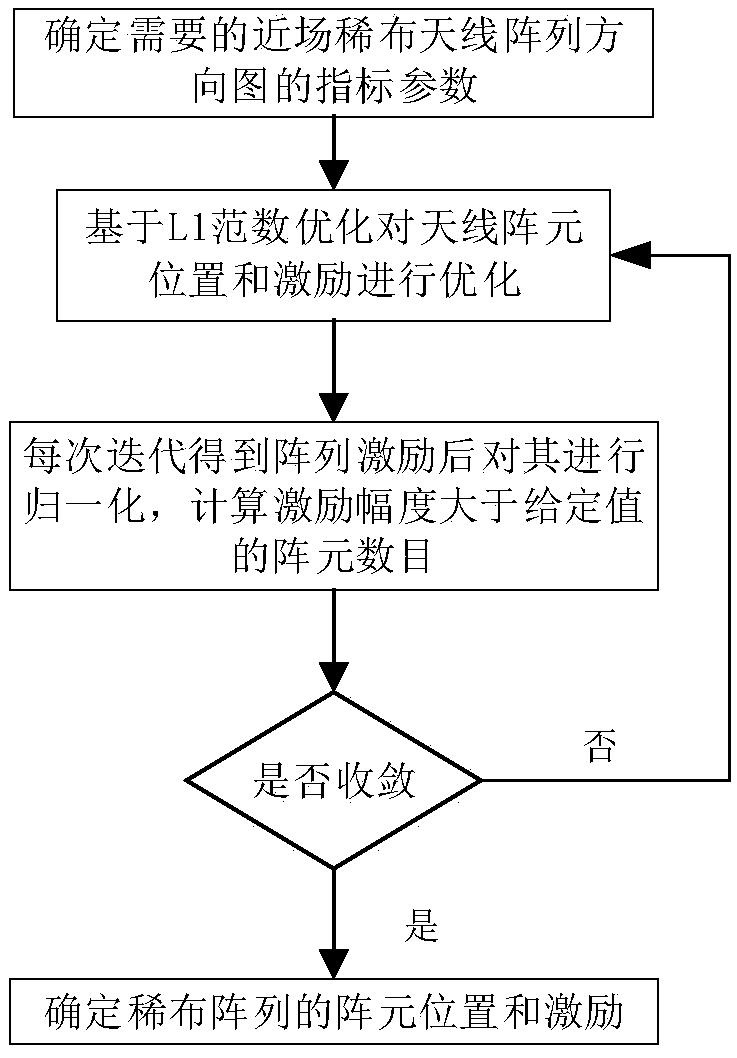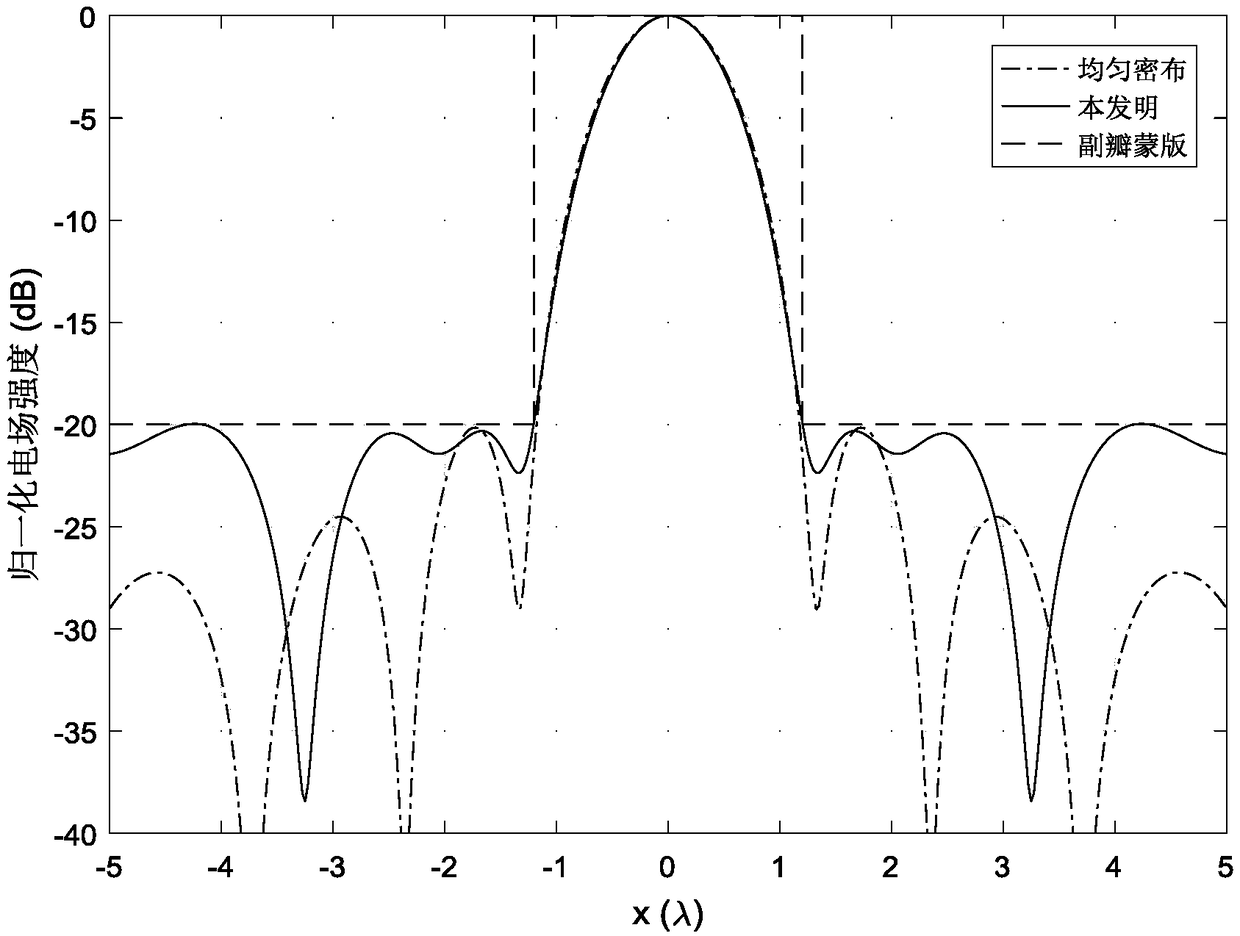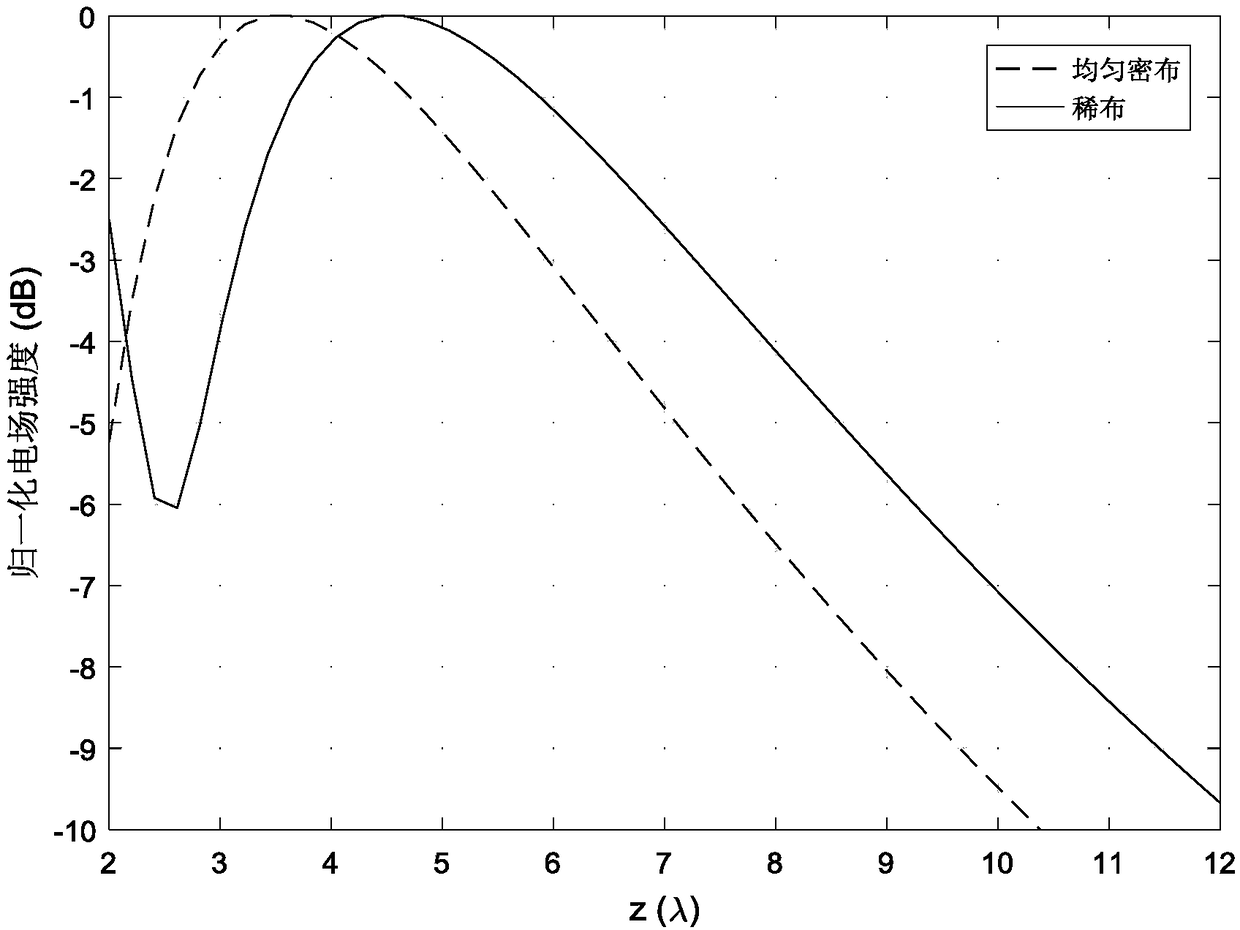Near-field sparse antenna array optimization method based on L1 norm constraint
A technology of antenna array direction and L1 norm, which is applied in design optimization/simulation, electrical digital data processing, special data processing applications, etc., can solve the problem of focus shift, near-field sparse antenna array optimization algorithm cannot accurately control the near-radiation Field pattern side lobe level and other issues, to achieve the effect of controllable side lobe level and solve focus shift
- Summary
- Abstract
- Description
- Claims
- Application Information
AI Technical Summary
Problems solved by technology
Method used
Image
Examples
Embodiment Construction
[0028] Embodiments of the present invention are described below through specific examples, and those skilled in the art can easily understand other advantages and effects of the present invention from the content disclosed in this specification. The present invention can also be implemented or applied through other different specific implementation modes, and various modifications or changes can be made to the details in this specification based on different viewpoints and applications without departing from the spirit of the present invention.
[0029] A near-field sparse antenna array optimization method based on compressed sensing and convex optimization, comprising the following steps:
[0030] Step 1. Determine the index parameters of the required near-field sparse antenna array pattern: according to the given array aperture size, set a planar array with evenly distributed array elements, and the array element spacing is between 0.01λ and 0.5λ Select, where λ is the worki...
PUM
 Login to View More
Login to View More Abstract
Description
Claims
Application Information
 Login to View More
Login to View More - R&D
- Intellectual Property
- Life Sciences
- Materials
- Tech Scout
- Unparalleled Data Quality
- Higher Quality Content
- 60% Fewer Hallucinations
Browse by: Latest US Patents, China's latest patents, Technical Efficacy Thesaurus, Application Domain, Technology Topic, Popular Technical Reports.
© 2025 PatSnap. All rights reserved.Legal|Privacy policy|Modern Slavery Act Transparency Statement|Sitemap|About US| Contact US: help@patsnap.com



